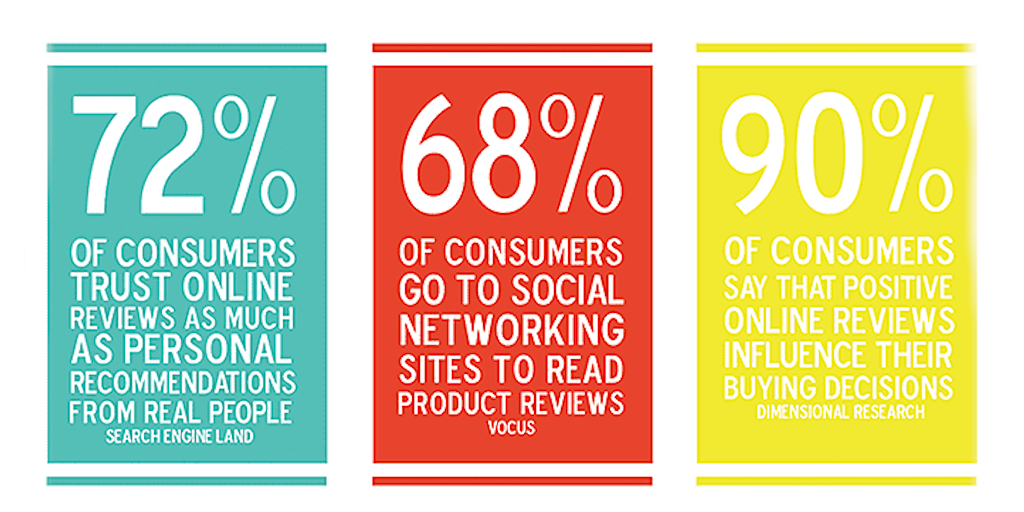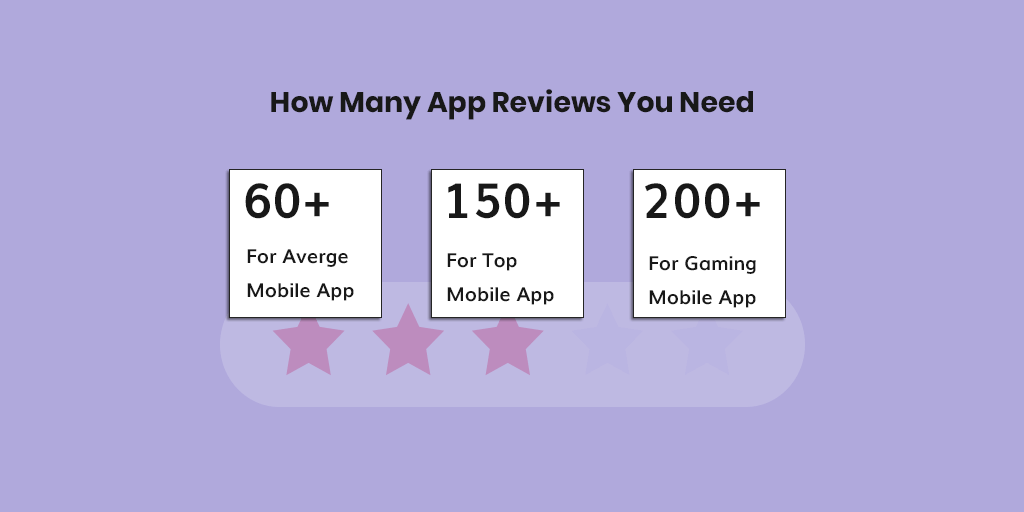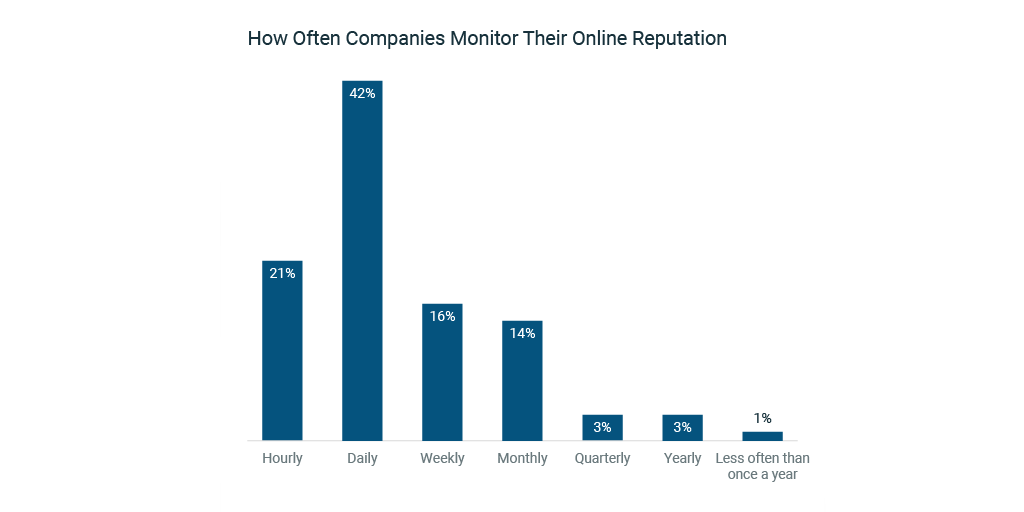“Everyone who works here is a jerk. It smells terribly bad and the manager is an a**hole.” – Vanessa, TrustPilot
As a business owner, how would you respond to this review? Fight back and tell the customer they’re wrong? Ignore it and hope it goes away? Or apologize profusely and kill them with kindness?
In a world where 70% of consumers look at multiple review sites and read a whopping 10 reviews before choosing a local business, review management needs to be a crucial part of your business success plan.
But with 63% of businesses not checking or responding to their online reviews, we at Process Street, have written this post to help you understand the impact and importance of managing your online reviews.
This post will tell you everything you need to know about review management, including the following topics:
- What is review management?
- Where did review management begin?
- How important is review management?
- How to respond to reviews
- How to get more reviews
- When to ask for reviews
- How to monitor reviews
- How to use Process Street to manage online reviews
We will also give you access to 14 super-charged templates that will actively help you manage your online reviews. If you’re in a hurry, feel free to jump straight into them:
- Asking Valuable Customers for Feedback Checklist
- Customer Service Representative Performance Review Checklist
- Individual Review Feedback Analysis Process Checklist
- How to Ask for a Review from a High Touch Client Checklist
- How to Get Google Reviews from Top Customers Checklist
- How to Get Reviews on Amazon With a Personal Touch Checklist
- How to Respond to Google Reviews Process Checklist
- How to Respond to Yelp Reviews Process Checklist
- Monitor Reviews Set-up Checklist
- Positive Review Response Process Checklist
- Product Review Process Checklist
- Reply to eBay Feedback Process Checklist
- Responding to Negative Reviews Process
- Social Listening Strategy Process Checklist
If you’re curious about what these templates look like, check out this embedded Social Listening Strategy Process Checklist here, or scroll down to find them all embedded.
But if you’ve got time, grab yourself a cuppa and let’s get started!
What is review management?
Online reviews have become the powerful King of commerce. They’re everywhere. They can be seen by everyone. They influence purchase decisions, they make or break a company’s reputation and they are becoming one of the most influential research tools online.

For instance, did you know that an online review is 12 times more likely to influence a purchase than a product description? Or that 72% of customers don’t take action until they’ve read the reviews of a product or service?
“Business leaders can’t afford to ignore reviews because they broadcast consumer perception and impact customer purchases” – Erna Alfred Liousas
Consumers use reviews to express everything from great experiences and confidence in brands, to dissatisfaction with services and products. All companies are at the mercy of these reviews and it’s becoming increasingly important to have a process in place to manage them carefully.
This is where review management comes in. With so many opportunities for consumers to make their views public, review management is your only way forward.
Get the process right and your customers will love you forever, tell all their friends how great you are, and become loyal advocates of your brand.
Get the process wrong and… well… let’s just say, with 95% of shoppers reading online reviews before making a purchase, it’s incredibly important to get it right.
“Using Process Street has been a game-changer for our business…”- Capterra Reviews
“We’ve helped several other firms implement it and they have all had similar results. I highly recommend Process Street!” – Capterra Reviews
Now we know what review management is, let’s look at where it came from and how it all started.
Where did review management begin?
Where did online reviews come from and how have they become one of the most authoritative research tools online?
The online review phenomenon began in 1999 with three small review sites: Epinions, Deja, and RateItAll. In one year, these three sites had accumulated over one million reviews.
Clearly, they were onto something.
As more and more online review sites started popping up and the online review process continued to evolve, five major companies began to monopolize the space.
Can you guess who the big five were?
Yep, you guessed it! Yelp, Amazon, Google, Facebook, and TripAdvisor were the five big players. Not only did they play the game, they completely changed it. They were instrumental in shaping online reviews into what they are today.
In a nutshell, Google was the first to allow users to view and leave reviews when searching for a business online. Yelp introduced online medical reviews. Facebook brought in the “check-in” feature that naturally encouraged reviews. Amazon invented the “verified buyer” badge, and TripAdvisor was the first to allow users to leave reviews about restaurants, hotels, destinations, and points of interest.
Fun fact! Yelp got its name because it was easy to remember and combined the words “help” and “yellow pages.” – Insider
The big five were not only responsible for the evolution of online reviews, but they were also responsible for making sure that the customer remained at the center. They were committed to making sure that reviews were a way to help consumers get the full picture when they were in the buying process.
They were so committed to this cause, that these days, two-thirds of consumers will form an opinion about a business after reading less than six reviews!
While it’s great that consumers get the full picture, it has turned shoppers into volatile and unforgiving creatures and it’s no surprise that some businesses are losing their grip on their online feedback.
Which leads me to my next point…
How important is review management?
Did you know that 90% of people use online reviews to make buying decisions? Did you also know that adding a +1 to your average review rating can lead to 9% more revenue?
These are two solid reasons why managing your online reviews is critically important. It can be the difference between success and failure. But, as we’ve established, the world of online reviews can be a nightmare to navigate.
Respond in the wrong way for instance, and BOOM. You’ve gone from hero to zero in seconds.
“With almost three billion people active on social media channels, news spreads at a rapid rate”- Dmytro Spilka
Take United Airlines as an example. They issued a repugnant response to the recording of a passenger being forcefully removed from their flight. As soon as people got wind of their response, shares in its parent company dropped by $1 billion.

Whatever industry you’re in, a good review management process will guide you on how to collect, manage, and use online reviews to your advantage.
Take HWY-55 as an example. HWY-55, a fast food joint, had problems with line-of-sight customer feedback across their 143 franchise locations.
They wanted to collect more review data, across all their franchise stores, so they could better respond to their customers and make sure they were improving in the right areas.
Andy Moore, director of communications at HWY-55 knew he needed…
“a process, a system, to respond to and engage with customers on review sites.” – Review Trackers
After implementing a review management process, they uncovered a surprising problem area.
The team at HWY-55 had always thought their wait staff were doing a great job… but found out this wasn’t the case after analyzing reviews.
“It was interesting because we felt we were doing pretty O.K. at that and then we realized that it actually was a real pain point for us.” – Review Trackers
They acted upon the insights they found by introducing a training and onboarding process to help their staff become better at their jobs. They also found that having a process in place to manage their reviews meant they cut down their response time by 75%, giving them more time to focus on other important matters.
Having a review management process in place identified a problem they didn’t know they had, which enabled them to improve their service, and keep their customers happy.
Let’s explore this further in the next section by looking at how to respond to reviews.
Whether it’s your responsibility or you have a team of customer service representatives – responding to online reviews is one of the best ways to beat the competition and build strong relationships with your customers.
Around 80% of consumers believe that a business cares more about them when they receive a response to their reviews – Review Trackers
But, as we’ve established, responding in the wrong way can devastate your business.
If you have a team of representatives responding to online reviews, it may be worth introducing a social media response triage. This “if” and “then” flowchart makes sure all responses are dealt with in the right way.
Before we go into detail on how to respond to reviews, first, let’s look at why you need to respond to reviews.
“Responding to reviews shows that you value your customers and the feedback that they leave about your business” – Entrepreneur
Business owners who respond to both good and bad reviews are showing the world that they care about their customers. It builds trust among existing customers and creates trust among new customers.
Organizations that do not acknowledge or respond to reviews and customer feedback, have been found to experience lower review scores and overall ratings. To back this up, a study into hotel reviews by the Harvard Business Review, found that hotels who responded to all reviews saw an increase in their overall rating.
So it clearly pays to respond, but let’s get back to how you should respond.
Customer reviews tend to fall into one of two categories: positive reviews or negative reviews. This section will cover how to respond to both.
Responding to negative reviews
All businesses make mistakes: a package doesn’t arrive on time, a restaurant brings out the wrong dish, or a doctor’s office forgets to log a patient’s appointment.
This can often lead to negative reviews.

You can’t control what someone says about your business. But you can control how you respond to it.
And you should.
“45% of customers say they’re more likely to visit businesses that respond to their reviews” – Review Trackers
Your concern is not whether the negative comments you have received are deserved or fair. Your concern is how to handle them.
“38% of businesses admit that they do not know how to best deal with negative reviews” – Charged
Start by thanking them. Show your customers that your business appreciates and values candid feedback. Resist the urge to go into detail and defend each and every piece of criticism.
According to Ryan Erskine from Forbes:
“Business owners should keep the interaction simple and to the point, while calmly handling the criticism.”
Never respond hastily or in a fit of passion. Take a deep breath and consider the most professional way to respond.
Apologize. Even if, in your opinion, the response doesn’t warrant an apology, grit your teeth and say sorry.
“A poorly worded reply will get seen by 89% of customers, many of whom will use that information to judge whether or not they ought to do business with you” Ryan Erskine, Forbes
Above all, always take ownership, be graceful, and promise to make things right in the future.
Responding to positive reviews
Responding to positive reviews often gets side-lined for damage control caused by negative reviews. But responding to positive reviews is a powerful form of consumer engagement not to be taken lightly.
“Engaging customers who are already enthusiastic about your business is the perfect way to create a loyal following and a strong referral network” – Help Scout
Make your response personal. Use their name if you can. A study, conducted by Dennis P. Carmody and Michael Lewis, showed that people’s attention is activated when they hear their own name.
Say “thank you”. If someone paid you a compliment, you wouldn’t ignore it, you’d thank them.
Add value. Add a CTA. Give the customer more than a generic thank you. If they had a good experience, ask them to share it on social media. If they liked a new product feature, give them the chance to become beta testers for the next new feature.
Replying to positive reviews is an opportunity to further engage your customers. It builds an optimistic buzz around your business, inspires customer loyalty and showcases your exceptional customer service.
That covers how to respond to customer reviews, but proactively asking for their feedback is just as important. Let me explain why in the next section…
How to get more reviews
Reviews build trust. It’s a well-known fact that the presence of online reviews plays a powerful part in turning visitors into customers. That, and the fact that 48% of consumers only take into account reviews written within the past 2 weeks, its seems obvious that businesses should be proactively asking their customers for feedback.
But many have the fear. What if I were to ask and receive a negative review? Wouldn’t that be detrimental to the success of my business? Is that not like playing with fire?!
Not necessarily…
Let’s look at negative reviews for a second.
Consumers are a suspicious bunch. Five-star ratings can often be seen as “too good to be true” and near-perfect ratings can undermine the overall credibility of your reviews.
Research has found that 82% of shoppers specifically seek out trustworthy, authentic, and therefore often imperfect reviews and ratings.
“When no one says anything negative about a brand or a product and only positive reviews exist, customers can feel it’s too good to be true” – Consumer Affairs for Brands
If you receive negative feedback, use it to your advantage. Think about it. Asking for a review is the perfect opportunity to find out what your customers genuinely think about you. If what they think is good, hooray! If what they think is bad, improve!
The other great thing about negative reviews is, if handled well (see the previous section!), they show other customers how good you are at solving problems. It’s a chance to show how accountable, respectful, and loyal you are as a company, and that if they ever had a problem, you can be trusted to fix it.
See! Negative feedback can be a positive thing!
So, where were we? Ah yes, we were discussing the art of asking customers for reviews. To recap quickly, we’ve established that online reviews can have a significant impact on conversions. We’ve proved that all comments, both negative and positive, are beneficial to your organization, and we’ve hopefully confirmed that asking a customer to leave a review is the natural and seamless way to build trust and advocacy.
Now we know why it’s important to ask for feedback, I guess the next question is how to ask for it.
You can ask your customers for reviews in lots of different ways. Here are three of them:
1. Email campaigns
“One of the most effective ways to generate new reviews is through review request email campaigns” – Review Trackers
Requesting a review via an email is a no-brainer, especially if you’re collecting data such as their email address, naturally, through a transaction. It’s also a nice, personal, way of carrying on the conversation with your customer post-purchase.
If the email is sent after a customer has bought a product, it ties that review directly to that product, which adds a level of credibility and authenticity to the feedback that’s been given.
Moreover, sending an email request for a review enables you to accurately evaluate how satisfied your customer is and identify those who are likely to recommend your business versus those who aren’t.
Create an irresistible subject line, keep the email short and snappy, and include personalization where possible. For more details on how to write fantastic post-purchase emails, check this article out.
2. Mobile app survey
If you have a mobile app, you’ll need more positive reviews than you have friends.

“70% of people read more than one review before downloading the app” – Mobile App Daily
Mobile app reviews determine how visible your app is in the crowded app stores. The more reviews you have, the more visible you will be and the more likely you’ll feature on the homepage. With apps appearing daily, if you have no reviews, you won’t be seen. Simple as that.
“A mobile app must have above 60 app reviews for an average rating on Android/iOS app stores” – Mobile App Daily
The quickest and easiest way to get an app review from someone is to ask them to do it within your app using one of the thousands of plugins that are available for iOS and Android.
Make sure you follow these three golden rules though.
1. Don’t irritate users. The only thing marginally worse than a pop-up, is a pop-up, popping up at precisely the wrong time. Agreed? Don’t interrupt the user’s experience – time the feedback pop-up appropriately.
2. Wait. Give the user a chance to use the app before you ask for feedback. Set criteria that will delay the request until the user has experienced it more than a handful of times.
3. Ask nicely, don’t beg. Make it a personal conversation. Make the user feel like, by giving their feedback, they are directly contributing to the success of the app.
3. Net Promoter Score
Conducting an NPS (Net Promoter Score) survey to measure customer experiences is an approach most SaaS Companies adopt to ask for customer feedback.
In fact, Process Street uses an NPS survey to determine who our promoters are, who is passive about the brand and who detracts from it. It’s fantastically useful to gauge what we’re doing super well, and what we can improve on.
Once you’ve determined how to ask your customers for reviews, the next step is to decide when to ask them.
When to ask for reviews
As with most things in life, timing is everything. Asking a customer for a review is no exception.
Ask too soon and become irritating.
Many businesses mistakenly place “please provide feedback” pop-ups that appear as soon as a customer visits their site. You’re asking a customer to leave a review about something they haven’t yet experienced. What do you expect them to say?
Ask too late and become irrelevant.
If you ask for a review too late, you may find your customers aren’t interested any longer or can’t remember the details of their experiences.
Too soon or too late, either way – you are likely to be ignored.
Every company is different, but experts say that the ideal time to ask for a review is when you can be sure the buyer journey is over.
“Ideally, the product will not only have arrived, but the customer will also have had a decent chance to use it.”- Reviews.io
To make sure a feedback request is sent at the right time, set some criteria that should be met before a request is sent.
For example, Process Street only asks for feedback if the customer has met the following criteria:
- has been a member for over 100 days
- has had over 70 web sessions
- has been active within the last 30 days
Requesting feedback can sometimes be seen as intrusive and annoying by your customers. But equally, prompting for a review when users are feeling good about the app/product/service makes it a win-win situation, and ours is a good example of effective SaaS PR.
Moral of the story? Put some thought into when you ask them for it.
So, we know why review management is important. We’ve discussed how to respond to reviews, and we’ve talked about when and how to ask for reviews. The final piece of the review management puzzle is how to monitor and keep track of your online reviews.
How to monitor reviews
Online reviews can either make or break a business. Every year, more and more people flock to popular social and review platforms like Yelp, Facebook, and Google to both praise and criticize businesses.
“More than 26,000 reviews hit Yelp alone every single minute of every single day” – Vendasta
So it’s essential that businesses take all their reviews seriously and take the time to respond to each one.
“People are talking about you constantly. They could be asking for help, complaining about a bug, or raving about how much they love you” – Hubspot
To stay on top of their reviews, on the increasing number of review sites and social media platforms, businesses must monitor their online reputation on a daily basis, as the graph below shows.

But how?
How do companies have the time to monitor reviews every day? Sifting through irrelevant posts on multiple channels is overwhelming and can be a huge drain on time and effort.
Listen to what your customers are saying about you through tools like Google Alerts or Mention. These tools will automatically alert you when your brand is mentioned or a review is left on a website such as Facebook, Twitter, Quora, Yelp or TripAdvisor. Choose to receive alerts as frequently as you like.
“Real-time alerts are preferable to keep track of reviews and to prevent negative comments from going viral” – The Retail Doctor
Customers will look for a place to share their experiences if they’re not addressed by the company, so stay on top of your reviews, and make sure you respond to each one.
And there you have it. We’ve covered the basics of review management.
Time to put it all into practice!
Not sure where to start? Don’t worry, Process Street is here to help.
How to use Process Street to manage online reviews
More and more brands are investing in expensive online review software to monitor their reviews, automate review collection from consumers, and respond faster to reviews.
But review software, on its own, won’t be enough to manage your reviews consistently. You need solid processes in place to make sure you get it right, every time. Use Process Street, alongside tools such as Google alerts, Hubspot, or Hootsuite, customer support platforms like Intercom, Freshdesk, or Drift, and dedicated monitoring software like Review Trackers, Sprout Social, or Birdeye.
Before I tell you exactly how Process Street can help you build processes to manage your online reviews, let me first introduce you.
Process Street is super-powered checklists. You can manage all your recurring tasks, procedures and workflows with our bespoke Business Process Management (BPM) software.
With Process Street you can create a process for everything. Watch this video, it explains it all.
You can create templates and run individual checklists for each member of your team. Check tasks off as you work through them, set deadlines, request approval, assign tasks, and track each team member’s progress.
Speaking of templates, we’ve created 14 of them to help you manage your online reviews. From responding to feedback, asking for reviews and monitoring comments about your brand online, these templates will support all your online review management processes.
Look at the templates below, and you’ll see what I mean.
Asking Valuable Customers for Feedback Checklist
As we established earlier, you need to keep a steady stream of reviews coming in to increase conversions and build trust. This template will give you a process to follow that will help you ask your most valued customers for feedback.
Click to access the Asking Valuable Customers for Feedback Checklist
Customer Service Representative Performance Review Checklist
This template will allow you to develop your customer service representatives to improve their ability to handle your customers in the way that you want and keep them motivated to do their job to the best of their ability.
Click to access the Customer Service Representative Performance Review Checklist
Individual Review Feedback Analysis Process Checklist
This feedback analysis template will allow you to analyze each piece of feedback you receive from your customers and determine the best course of action for dealing with it.
Click here to access the Individual Review Feedback Analysis Process Checklist
How to Ask for a Review from a High Touch Client Checklist
Asking for a review is a way to reduce the risk of negative reviews happening. When customers see a lot of reviews coming in on a regular basis, it gives the appearance that your business is popular and this instills trust. Use this template to ask your high touch customers to give you a review.
Click here to access the How to Ask for a Review from a High Touch Client Checklist
How to Get Google Reviews from Top Customers Checklist
Google is one of the top sites for online reviews. Everyone has a Google account, and the easier companies make it for customers to leave a review on Google, the more reviews they will get. Use this template to increase the number of reviews you get on Google from your top customers.
Click here to access the How to Get Google Reviews from Top Customers Checklist
How to Get Reviews on Amazon With a Personal Touch Checklist
Getting customers to leave reviews is the key to success on Amazon. Use this template to send Amazon feedback request emails, with a personal touch, to your customers.
Click here to access the How to Get Reviews on Amazon With a Personal Touch Checklist
How to Respond to Google Reviews Process Checklist
Google is the world’s number 1 search engine. It has also become the fastest-growing website for customer reviews of businesses. Use this template to respond to your Google reviews and build trust, earn repeat business, and show that you value your customers and the feedback that they leave.
Click here to access the How to Respond to Google Reviews Process Checklist
Responding to Negative Reviews Process
This template will guide you through the process of responding to negative reviews. As 82% of shoppers specifically seek out negative reviews and 44% say that a great response to a negative review would win them back, it’s crucial that you respond, in the right way, to negative reviews.
Click here to access the Responding to Negative Reviews Process
How to Respond to Yelp Reviews Process Checklist
Did you know that 53% of customers expect businesses to reply to their online reviews within seven days? Use this template to respond to the reviews you get on Yelp, one of the most popular internet review sites for local businesses.
Click here to access the How to Respond to Yelp Reviews Process Checklist
Monitor Reviews Set-up Checklist
Use this template to set up automated alerts whenever your business is reviewed or mentioned on the web. Use it to store the feedback you receive in one central place, so you can analyze it and formulate action plans.
Click here to access the Monitor Reviews Set-up Checklist
Positive Review Response Process Checklist
Responding to positive reviews needs a process so that all responses are ‘on brand’ and demonstrate the company values. Use this template to not only thank the customer but to reinforce your company’s brand.
Click here to access the Positive Review Response Process Checklist
Product Review Process Checklist
Asking customers to review a product is the perfect way to gain insight into any pain points the product has, so you can improve and grow. Use this product review template to get the customer to review a product they’ve purchased.
Click here to access the Product Review Process Checklist
Reply to eBay Feedback Process Checklist
Responding to feedback on eBay helps the buyer evaluate whether you’d make a suitable, trustworthy and responsible trading partner. Use this template to respond to your eBay feedback and clinch the sale.
Click here to access the Reply to eBay Feedback Process Checklist
Social Listening Strategy Process Checklist
Social media listening finds customers’ issues, establishes frequently asked questions, confirms what customers love about you, identifies key social media customers, and gets a sense of whether people are positively or negatively mentioning your brand. Use this template to create a strategy to monitor social media sites, store all the mentions you receive, analyze each one and take action.
Click here to access the Social Listening Strategy Process Checklist
We also have the following related articles and checklists that will help you in all areas of review management.
Review management related articles and blogs
- How We Collect and Analyze Customer Feedback to Improve Our Startup
- Why You Need Customer Service Processes, and How to Get Started Now
- How to Use Emotional Intelligence to Provide Exceptional Customer Service
- Self-Service Vs. Customer Support: Which is the Best Customer Engagement Strategy?
- Service Level Agreement Template: How to Create Solid SLAs at Super Speed
- What is an SLA? How to Use Service-Level Agreements for Success
- How to Build a Customer Feedback Analysis Process (with AI!)
- User Feedback: 3 Methods We Tested to Better Understand Our Users
- How We Collect and Analyze Customer Feedback to Improve Our Startup
- How Your Marketers Can Improve Customer Service
- How We Use Customer Service To Our Competitive Advantage
- 5 Customer Service Metrics
- How Processes are Vital to Your Customer Service
Even more review management related process checklists!
- Customer Support Process
- Helpdesk Management Process
- IT Service Call Process
- Customer Feedback Survey Process
- Call Center Employee Onboarding Process
- Performance Management Process
- Daily Customer Service Duties
- Employee Performance Review
- Customer Service Training
- Reduce Churn Checklist
- Customer Service Performance Review
- How to Respond to Negative Reviews
Review management is necessary to maintain your brand’s image, find flaws in your business, identify what customers are loving that you could highlight in your marketing, and increase your SEO visibility.
Use Process Street to keep your grip on online reviews
Process Street can give you more than templates and checklists (super-powered though they are!) to help you manage your reviews.
We have the following additional features designed to create efficiencies, automate workflows and make processes within your business run smoothly:
- Stop tasks
- Dynamic due dates
- Task permissions
- Conditional logic
- Approval tasks
- Embed widget
- Role assignments
But wait, there’s even more!
With Process Street, you can also connect to thousands of apps through Zapier, webhooks and API access to automate your workflows even more.
Watch our webinar on business automation to discover how to take your workflows to the next level.
We hope you found this post useful. We’d love to hear how you handle your online reviews in the comments below. Who knows? You may even get featured in an upcoming article!







 Workflows
Workflows Projects
Projects Data Sets
Data Sets Forms
Forms Pages
Pages Automations
Automations Analytics
Analytics Apps
Apps Integrations
Integrations
 Property management
Property management
 Human resources
Human resources
 Customer management
Customer management
 Information technology
Information technology




Amanda Greenwood
Amanda is a content writer for Process Street. Her main mission in life is to write content that makes business processes fun, interesting, and easy to understand. Her background is in marketing and project management, so she has a wealth of experience to draw from, which adds a touch of reality and a whole heap of depth to the content she writes.